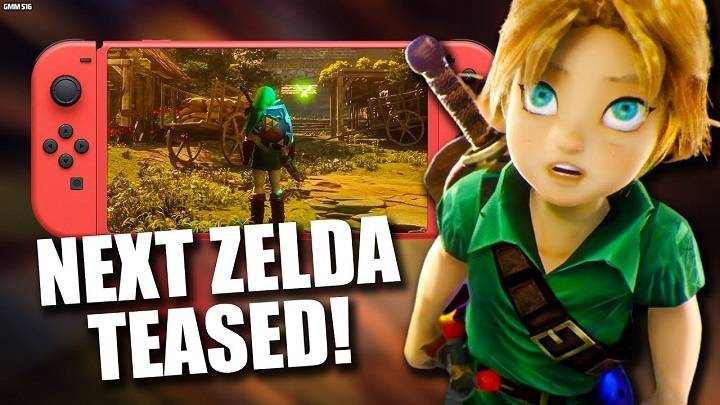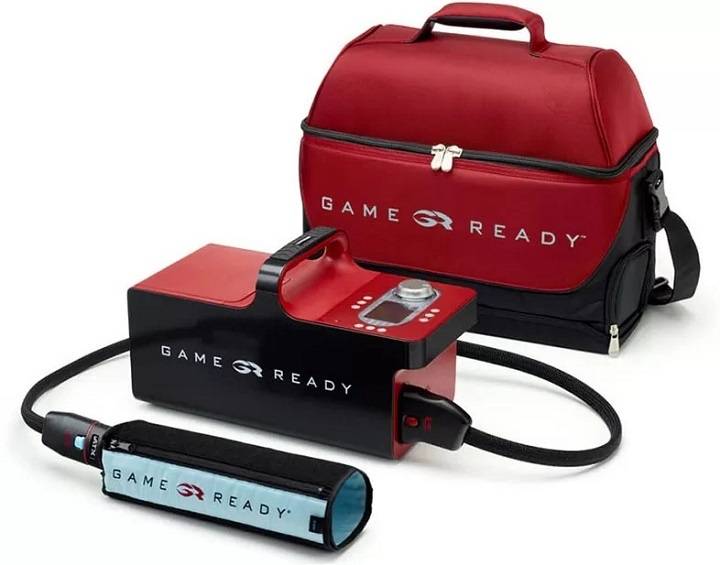Sega Game Gear – The Colorful Handheld That Attempted to Dethrone Game Boy

Classic video games, you might say, and your brain instantly goes to Nintendo, PlayStation, and Xbox. But back in the 1990s, there was one console which attempted to put a stop to the world of handheld gaming for good, the Sega Game Gear.
The Sega Game Gear was not only another hand-held video game system. It was Sega’s daring challenge to the Game Boy. It featured a color display, backlight, and some innovative add-ons. Which made it stand out from the pack. It was like holding the future in your hand.
It didn’t win the handheld war though. But it became a legend. Today, gamers still talk about it. They collect it, and remember it with love.
Here, we’ll know the history, design, games, and legacy of the Sega Game Gear. Just like exploring different stages of a retro video game.
What Was the Sega Game Gear?
Sega Game Gear was a previous handheld console. It came out in 1990 in Japan and 1991 in Europe and North America. It was manufactured by Sega. The same company made the Sega Genesis (also Mega Drive) and the likes of Sonic the Hedgehog.
The Nintendo Game Boy was already popular then. But the Game Gear did something unique. It had a color screen display, an integrated backlight, and a landscape orientation. Which was like a miniature TV, not a game.
It vowed to make console gaming fit in your pocket. And for some gamers, it did exactly that.
Why Was the Game Gear Special?

Let us see why the Game Gear was different from the others:
Color Screen – The screen of the Game Boy was green-and-black. But the screen of the Game Gear was a color screen. This meant that the games looked brighter and more colorful.
Backlight – You could game in the dark! The screen glowed from the back, something that the Game Boy lacked for many years to come.
Big Size – It was bigger than most portables. Some people liked how it fit in their hands. Others felt that it was too big.
TV Tuner Accessory – If you had an accessory, you could watch real TV on your Game Gear. It turned the game system into a portable TV—blissful 90s awesomeness!
Sega Genesis Ports – Some of the Game Gear games were ports of Sega Genesis titles, providing fans with home comfort on the move.
The Game Gear was made to blow minds and in many ways, it did.
Which Games Did They Publish on the Game Gear?
The Game Gear had a great range of games. There were around 300 official titles made worldwide overall.
Some of the best and most recognizable Game Gear games are:
Sonic the Hedgehog – He was Sega’s icon, and he appeared in some of the Game Gear games. Fast, intelligent, and thrilling, Sonic helped people buy the console.
Columns – A side-scrolling puzzle game similar to Tetris but with gems. It came prepackaged with many Game Gear systems and was a fan favorite.
Shinobi – A cute ninja action game that suited the handheld well.
Streets of Rage – Side-scrolling fighting action full of punching and kicking.
Mortal Kombat – The hit of the arcades was seen on Game Gear, though minus some of the Genesis’ gore.
Castle of Illusion starring Mickey Mouse – Gently animated platformer with Disney charm.
Tails’ Adventure – Paced more slowly, puzzle-oriented side game based around Sonic’s sidekick.
Fantasy Zone – Light and bright shoot-’em-up that looked great on the color screen.
There were also mainstream sports games, racing games, puzzle games, and RPGs ported.
Despite the fact that Game Gear did not include as many games as Game Boy had, its games were all great graphics and fun to play.
The Look of the Game Gear
Sega Game Gear was really a departure from the Game Boy. And whereas the Game Boy was gray and upright, the Game Gear was black, curved in shape, and broad—nearly a small Sega Genesis.
Finally on to the details of the design:
Screen – 3.2-inch backlit color screen
Buttons – Directional pad (D-pad), two action buttons (1 and 2), and Start button
Sound – Internal speaker and headphone jack with stereo music
Power – Used 6 AA batteries that lasted approximately 3–5 hours of play
Cartridge slot – Cartridges inserted into the rear
Ports – Ported connectors for link cables, TV tuner, and power adapters
The screen itself was beautiful back then but drained batteries fast as well. People recall waiting in line next to an electric outlet with their Game Gear. Which was connected to it since they did not want to have to keep changing batteries anymore.
Game Gear Accessories
Sega produced a fantastic amount of Game Gear accessories and add ons. They were either useful or just fun to play with. These are some of the most interesting ones:
TV Tuner Pack – Turned the Game Gear into a portable TV. You could watch your shows anywhere (as long as you had good signal reception).
Master Gear Converter – Allowed you to play Sega Master System games on your Game Gear. This gave you an enormous amount of additional games to play.
Rechargeable Battery Pack – Kept you money in your pocket on AA batteries by letting you charge up instead.
Car Adapter – Allowed you to connect the Game Gear to a car’s cigarette lighter receptacle and play during road trips.
Link Cable – There were multi-player games that did head-to-head play via a cable between two Game Gears.
Magnifier and Light Accessories – Still increased the screen size and brightness.
These accessories basically made the Game Gear resemble a full entertainment system as opposed to being a toy.
The Game Gear vs. The Game Boy
When it came out, people made comparisons. Which was between it and the Nintendo Game Boy. See how they compared:
Game Gear
Color screen
Backlit screen
Better graphics
Short battery life
Hence, heavier and larger
Slimmer game library
More costly
Game Boy
Black and white screen
No backlight
Simpler graphics
Longest battery life ever
Small and light
Humongous game library
Less costly
Paper-wise, in a number of ways, the Game Gear looked more enticing. But it was beaten in sales by the Game Boy because it was less expensive, used less power, and had more games. The Game Gear still drew a dedicated fan base, though.
Why Didn’t the Game Gear Win the Handheld War?
Although the Game Gear was cutting-edge technology when it initially hit the market, it had a few problems:
Battery Life – Tearing through 6 AA batteries every couple of hours or so was a definite downer. Parents didn’t like buying batteries so often.
Price – The Game Gear was more expensive than the Game Boy.
Game Library – It had fewer games, and third parties were more likely to release games for Nintendo first.
Size and Weight – It wasn’t as portable as the Game Boy.
Marketing – While Sega tried to market the Game Gear with hip advertisements, Nintendo was more dominant.
However, individuals loved the Game Gear. They believed that it was better than its time. It was robust, fun, and colored.
How Long Did the Game Gear Sell

The Sega Game Gear was on the market from 1990 to approximately 1997. It did pretty well for those years— selling a total of 11 million units worldwide.
That’s a lot. But the Game Boy outsold the Game Gear by over 100 million units. So the Game Gear was okay. But it couldn’t outsell the handheld king.
Sega eventually discontinued the Game Gear. They focused more on other consoles. It includes the Sega Saturn and Dreamcast.
Also Read: Game Nerdz: The World’s Greatest Place for Board Game Enthusiasts, Collectors, and Community Makers
The Legacy of the Game Gear
The Game Gear may never have topped the best-seller lists. But it has a legacy that continues.
Gamers remember it for:
The original first Game Gear that worked in color
A console-quality system for a small screen
A groovy bit of gaming history with groovy accessories
Today, gamers still search out working Game Gear systems and games. Even some of them mod their original Game Gear to enhance the screens and batteries.
Game Gear Micro (2020)
Sega released a Game Gear Micro in 2020 in Japan to celebrate its 60th anniversary.
It was a miniature version of the original Game Gear. Which was about the size of your hand. It was available in four colors, and each contained four preloaded games.
It was more of a collector’s item than a console. But fans were glad to see the return of it somehow.
Collector’s Tips
If you are a collector of Game Gear systems or games, the following are some items to watch out for:
Purchase from reputable sellers and have the system functional
Many of the older Game Gears have screen or sound problems—but many can be fixed
Look for popular games like Sonic, Columns, and Shinobi
Check to see if you can find the Master Gear Converter if you want to expand your collection of games
Dry and clean your systems and games so they can last
There are even websites to be found online. Retro gaming forums, Discord, and Reddit all contain Game Gear communities of fans with hacks, mods, and sales to share.
Last Thoughts
It wasn’t the most successful handheld console. But one of the most adventurous.
It gave gamers a technicolor screen, exciting games, and actual TV-like gaming in their palms while the competition was offering black-and-white. It wasn’t perfect—but it was unforgettable.
To most children who grew up during the 90s, it was their very first love for handheld games. Now, it is an oldie but a goodie that needs to be remembered.
You are probably a collector, retro gamer, or someone who just wants to know about the history of video games, but the Game Gear needs to be remembered.
It was powered by AA batteries, but powered by imagination.




